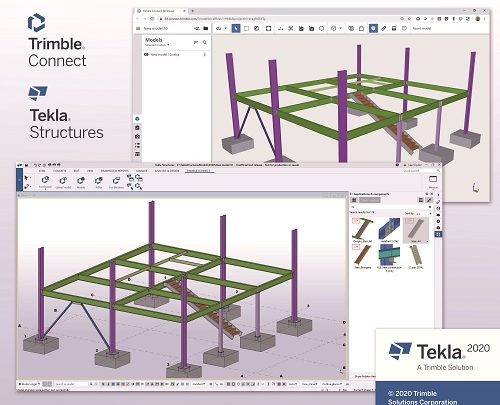In conversation with Mr. Harsh Pareek, Regional Sales Director, India and SAARC, Trimble Solutions: Technologies that will enable the construction world to function in the post-pandemic era

 Mr. Harsh Pareek, Regional Sales Director, India and SAARC, Trimble Solutions
Mr. Harsh Pareek, Regional Sales Director, India and SAARC, Trimble Solutions
Q1. How is the business being impacted during the lockdown?
Answer: Early data suggests that businesses across sectors have suffered a lot on account of the prolonged lockdown and resultant lack of economic activity. Many large industries; including manufacturing, aviation, travel and hospitality, and construction, have seen nearly zero output during the lockdown period.
For the engineering and construction sector, the shutdown of activities does not augur well with the migration of a large population of workers from large cities back to their villages. This is because construction is a labour-intensive sector, and is dependent on the presence of a large volume of workforce onsite for actual construction to happen.
Q2. How is Trimble helping the industry to collaborate & be productive while working remotely during this Coronavirus-induced lockdown?
Answer: To minimize the impact of labour shortage, construction companies must immediately buckle-up on optimizing and streamlining their workflows. In particular, they should focus on all offsite work processes that need reduced physical labour. Key non-physical work processes include architectural design, planning and structural engineering. The Indian construction industry even today is far from embracing true digitalization and automation, and thus often finds itself unable to execute even offsite workflows faster.
As an industry leader, Trimble has taken several affirmative actions to remedy this situation as far as possible and to support the construction companies’ kick start their offsite processes. Firstly, we have widened the scope and availability of our structural BIM collaboration tool – Tekla Model Sharing’s free trial, and it is now available globally, including India. Tekla users can now use it for a full 90 days for their business without incurring any fee. The number of trial licenses on offer has also been increased from five to ten. The earlier trial was available only for selected countries, and trial licenses were not meant to be used for business purposes. This facility helped a large number of staff of construction firms to work effectively from home during the lockdown period.
Secondly, we have expanded the capabilities of our cloud-based collaboration tool Trimble Connect. The personal license of Trimble Connect is available for free until June 2020, to allow engineering and construction companies to embrace real-time, remote collaboration. In addition to this, with the 2020 launch of the Tekla Tedds and Tekla Structural Designer, Trimble has introduced cloud-based licencing for new customers. All Trimble customers can switch their existing licences to cloud-based licensing service, which would allow them to use Tekla software from home or remote locations without requiring a connection through Virtual Private Networks (VPNs).
Our initiatives are designed to enable enhanced collaboration over the cloud, allowing the users even working remotely to deliver without loss of efficiency, which is very much the need of the hour during this worldwide health emergency.
All businesses are being forced to reimagine their operations as a result of the pandemic and the subsequent lockdown. We believe that engineering and construction companies must adopt the digital workflows to sustain/grow their operations, as isolation and social distancing will continue to be the new normal for a while.
Q3. What are the new opportunities you see coming up post lockdown as the economy gets back on track?
Answer: The impending recession in the wake of COVID-19 pandemic indicates a difficult future for the sector in the near to midterm. The social distancing norms are here to stay, and this also means that the construction industry will probably be amongst the slower sectors to bounce back from this pandemic, unless they start to use technology as an enabler ASAP.
Being a labour intensive sector can prove to be a bit of a disadvantage in the post-lockdown phase, given the labour shortage and precautions needed to be taken. However, the slowing demand can be a golden opportunity to accelerate the digital transformation of the industry. The adoption of modern construction technology and tools like precast/prefabrication, constructible BIM and cloud-based collaboration can significantly aid in remote working and help the construction industry still meet its project deadlines while reducing costs and wastage. We strongly believe that greater adoption of digitalized workflows across all stages of construction – from design and planning to engineering and onsite work – will be vital in overcoming the imminent slump for all major construction companies.
Q4. What technologies, according to you, will enable the construction world to function in the post-pandemic era?
Answer: The post-pandemic era is likely to be defined by significant digital transformation in every sector, including our own. The digital change of the construction sector will necessitate a complete transformation of several critical aspects of how the industry works: including unproductive sites, time management, safety, staff acquisition, and costs of project management. What the construction sector needs is to adopt a construction continuum to address all these different aspects, and also look to optimize the complete project lifecycle from a Design-Build-Operate (DBO) perspective.
As an industry leader, Trimble has the most comprehensive suite of technologies, products and solutions to support the industry in its transformation. 3D scanning, sensors, constructibility, and even drones are being used by Indian construction firms and we believe that since all the cutting edge technologies are working towards bridging the gap between construction sites and back offices, mitigating risk, reducing cost overruns, and ensuring timely completion of the project, their adoption will only increase in 2020 and beyond.


